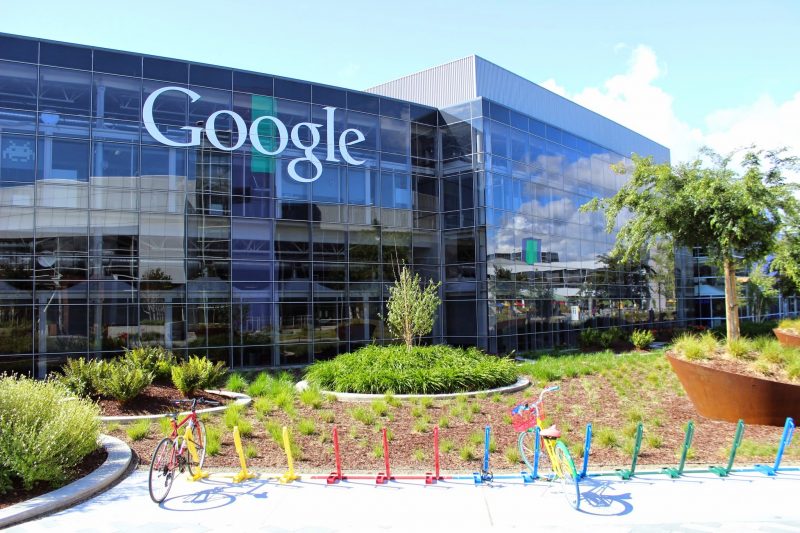Throw a dart at the GeekWire 200 and you’ll hit a fast-growing AI company. Stop by a Seattle Tech Week event and you’re bound to meet an AI engineer or entrepreneur. Scroll through lists of top global startup ecosystems and you’ll find Seattle ranked among the best.
But the defining moment for Seattle’s startup scene could still be ahead — thanks to an AI transformation that’s shaking up the technology industry.
“The opportunity here smacks you in the face with a sledgehammer,” said Greg Gottesman, a longtime venture capitalist in Seattle and managing director at Pioneer Square Labs.
Many startup leaders share the same sentiment, given the density of engineering talent that’s crucial to building companies in the burgeoning era of artificial intelligence.
“The number of people who are highly capable and super well-positioned to be able to leverage this next technology wave is very much in our favor,” said Aviel Ginzburg, a tech investor who leads Seattle-based startup hub Foundations.
As entrepreneurs, investors, and startup leaders prepare to gather for the annual Seattle Tech Week events this week, GeekWire interviewed more than 20 people across the community to get a pulse on Seattle’s startup ecosystem at the threshold of the AI boom.
The optimism was almost universal.
“This is Seattle’s generational opportunity,” said Samir Manjure, a veteran entrepreneur and CEO of Seattle startup Vieu. “We have the talent. We have the tech. Now we need to move louder, faster, and bolder.”
But beneath the optimism, warning signs surfaced. Some community leaders expressed concern about the region’s risk-averse culture, the lack of local capital, and government policy as potential roadblocks to startup success.
“There could be way more founders in the Seattle ecosystem than there are right now,” said Yifan Zhang, managing director of the AI2 Incubator and leader at the new AI House.
Seattle is still developing the “density of early-stage capital and the fast-moving, risk-tolerant culture that defines Silicon Valley,” said Navin Chaddha, managing partner at Bay Area firm Mayfield, which has backed two Seattle startups this year.
“That’s Seattle’s opportunity — to build more connective tissue for early-stage builders to take the leap,” he said.
Several other key trends emerged in our interviews — as well as suggestions to help the ecosystem thrive in the AI era.
Seattle is primed for the AI moment
There’s little doubt that Seattle is an epicenter for AI.
The Seattle region ranks third behind Silicon Valley and San Francisco as measured by the share of tech jobs involving AI, according to Burning Glass Institute, which analyzed job postings in large U.S. metros. Seattle ranked No. 10 in the actual number of AI jobs.
“There’s an immense amount of technical talent here,” said Sri Chandrasekar, a Seattle-based managing partner at Point72 Private Investments.
Other important factors about Seattle’s AI clout:
- Microsoft and Amazon anchor the region — hometown tech giants behind the cloud computing services that are essential for large language models.
- Top institutions such as the Allen Institute for AI (Ai2) and the University of Washington attract renowned researchers working on cutting-edge AI tools.
- Silicon Valley behemoths including Meta, Apple, Google and others have substantial engineering teams based in the Seattle region.
- Following the demise of Techstars Seattle, new communities focused on AI startups — Foundations, AI House, and others — have emerged as physical locations that encourage knowledge-sharing and peer support between entrepreneurs, while creating space for serendipity.
The presence of large tech companies helps — and hinders — the startup ecosystem

Matt McIlwain, managing director at Madrona, said his portfolio companies recently met with an Amazon executive to discuss the impact of AI on business models. The proximity and exposure to influential tech giants can give Seattle startups an advantage — something McIlwain calls “unfair access.”
“There’s not a lot of places in the world where you can have those kinds of conversations,” he said.
But those companies can also suck up tech talent that may otherwise join the startup ecosystem. And they may be a primary reason why Seattle has such a small sliver of the world’s billion-dollar “unicorn” startups despite a high concentration of elite software engineers.
- Large companies can offer higher salaries, more stability, and better work-life balance. Some theorize that talented tech workers choose big companies because they don’t like taking risks. But others believe it’s just common sense.
- “To me, that’s not risk aversion — it’s just smart,” said Andrew Peterson, an entrepreneur-turned-investor in Seattle.
Recent layoffs at Amazon and Microsoft could loosen the “golden handcuffs” that have historically kept talent within the corporate walls. But their skills and mindset might not translate well to entrepreneurship.
“They tend to be excellent at scaling in large corporate environments, but may struggle in a much smaller startup,” said Niki Parekh, a longtime entrepreneur whose startup was acquired by Microsoft.
Tech giants are also poaching top engineers to stay ahead in the AI race. Matt Deitke, a former Ai2 researcher who co-founded Seattle startup Vercept, just relocated to Menlo Park to join Meta — which is reportedly offering compensation packages worth up to $300 million over four years.
Leslie Feinzaig, managing director at Graham & Walker, said the ecosystem could use more “middle layer” growth-stage startups — companies that have raised plenty of cash and can provide a soft landing for corporate tech workers transitioning to startup life.
“We want more entrepreneurs, but I think we need to show them what it’s like to work in a venture-backed startup,” she said.
Many of the Seattle-area founders featured in our “Startup Radar” spotlights previously worked at Amazon, Microsoft, and other larger tech companies.
But given that Amazon and Microsoft combined employ more than 100,000 in the Seattle region, it’s a bit baffling that there aren’t more startups sprouting.
Resources and groups that provide training around entrepreneurship could help.
- “I think what’s missing is the early education and support for aspiring founders,” said Jen Haller, partner at early stage investment firm Ascend.
- That guidance can come from serial entrepreneurs or veteran investors — but leaders within large enterprise tech companies can also lend a helping hand to startups with their expertise or network, said Pablo Casilimas, managing partner at OneSixOne Ventures.
Cultural humility helps — to a point
Seattle startups are like the college students that never show up to class but ace their tests. Bay Area startups are the popular social butterflies that don’t have much depth behind the curtain.
That’s how Edward Wu sees the differences between founders in each ecosystem.
“Seattle startups are more low-key, more engineering-focused,” said Wu, CEO and co-founder at Seattle cybersecurity startup Dropzone AI, which just raised $37 million.
Sunil Nagaraj, managing partner at Silicon Valley firm Ubiquity Ventures, appreciates the sense of humility among the Seattle-area startups he’s backed.
“Folks there all feel like they’re in the grind,” he said. “Very few get ahead of themselves.”
But that approach may limit the number of startups that can achieve massive, disruptive growth — and become the next Microsoft or Amazon.
Many believe Seattle entrepreneurs need to embrace a bigger vision and a bigger dream. “That’s going to help a lot,” said Vivek Ladsariya, managing director at Pioneer Square Labs who relocated from San Francisco last year.
Part of that shift means founders taking more risks — and fostering a culture of accepting failures.
“Failure in Silicon Valley — it is no big deal at all,” Nagaraj said.
Capital remains a constraint — especially early on
.vc-chart-wrapper {
font-family: -apple-system, BlinkMacSystemFont, ‘Segoe UI’, system-ui, sans-serif;
margin: 20px 0;
padding: 0;
background: white;
}
.vc-chart-wrapper .vc-container {
max-width: 630px;
width: 100%;
margin: 0 auto;
background: white;
border-radius: 15px;
padding: 25px;
box-shadow: 0 8px 25px rgba(0, 0, 0, 0.1);
}
.vc-chart-wrapper .vc-header {
text-align: center;
margin-bottom: 20px;
}
.vc-chart-wrapper .vc-title {
font-size: 2.2rem;
font-weight: 700;
color: #333;
margin: 0 0 12px 0;
line-height: 1.2;
}
.vc-chart-wrapper .vc-subtitle {
font-size: 1.1rem;
color: #666;
font-weight: 400;
margin: 0;
line-height: 1.3;
}
.vc-chart-wrapper .vc-chart-section {
margin-bottom: 15px;
}
.vc-chart-wrapper .vc-chart-container {
position: relative;
height: 400px;
width: 100%;
background: white;
border-radius: 10px;
padding: 20px;
box-shadow: 0 4px 15px rgba(0, 0, 0, 0.05);
margin-bottom: 15px;
border: 1px solid rgba(0, 0, 0, 0.1);
}
.vc-chart-wrapper .vc-legend-container {
display: flex;
justify-content: center;
flex-wrap: wrap;
gap: 12px;
margin-top: 15px;
margin-bottom: 0;
}
.vc-chart-wrapper .vc-legend-item {
display: flex;
align-items: center;
gap: 8px;
padding: 8px 16px;
background: rgba(248, 249, 250, 0.9);
border-radius: 25px;
box-shadow: 0 2px 8px rgba(0, 0, 0, 0.1);
border: 1px solid rgba(0, 0, 0, 0.1);
transition: all 0.2s ease;
cursor: pointer;
}
.vc-chart-wrapper .vc-legend-item:hover {
transform: translateY(-2px);
box-shadow: 0 4px 12px rgba(0, 0, 0, 0.15);
background: rgba(255, 255, 255, 1);
}
.vc-chart-wrapper .vc-legend-item.dimmed {
opacity: 0.3;
}
.vc-chart-wrapper .vc-legend-color {
width: 14px;
height: 14px;
border-radius: 50%;
box-shadow: 0 1px 3px rgba(0, 0, 0, 0.2);
}
.vc-chart-wrapper .vc-legend-label {
font-size: 0.95rem;
font-weight: 500;
color: #333;
}
@media (max-width: 680px) {
.vc-chart-wrapper .vc-container {
padding: 20px;
margin: 0 10px;
}
.vc-chart-wrapper .vc-title {
font-size: 1.6rem;
}
.vc-chart-wrapper .vc-subtitle {
font-size: 0.9rem;
}
.vc-chart-wrapper .vc-chart-container {
height: 350px;
padding: 15px;
}
}
@media (max-width: 480px) {
.vc-chart-wrapper .vc-container {
padding: 15px;
margin: 0 5px;
}
.vc-chart-wrapper .vc-title {
font-size: 1.4rem;
}
.vc-chart-wrapper .vc-subtitle {
font-size: 0.85rem;
}
.vc-chart-wrapper .vc-chart-container {
height: 320px;
padding: 12px;
}
.vc-chart-wrapper .vc-legend-container {
gap: 8px;
}
.vc-chart-wrapper .vc-legend-item {
padding: 6px 12px;
}
.vc-chart-wrapper .vc-legend-label {
font-size: 0.75rem;
}
}
Venture Capital Investment Activity
Deal Value by Metropolitan Statistical Area (2017-2025)
// Data
const data = [
{
“year”: 2017,
“Seattle_value”: 2.6,
“Seattle_count”: 323,
“Boston_value”: 5.7,
“Boston_count”: 602,
“New York_value”: 9,
“New York_count”: 1241,
“Bay Area_value”: 27.9,
“Bay Area_count”: 2329,
“Los Angeles_value”: 5.4,
“Los Angeles_count”: 769
},
{
“year”: 2018,
“Seattle_value”: 4,
“Seattle_count”: 325,
“Boston_value”: 8.2,
“Boston_count”: 634,
“New York_value”: 13.9,
“New York_count”: 1383,
“Bay Area_value”: 42.7,
“Bay Area_count”: 2607,
“Los Angeles_value”: 10.8,
“Los Angeles_count”: 840
},
{
“year”: 2019,
“Seattle_value”: 3.8,
“Seattle_count”: 349,
“Boston_value”: 8.3,
“Boston_count”: 661,
“New York_value”: 15.9,
“New York_count”: 1583,
“Bay Area_value”: 47.5,
“Bay Area_count”: 2674,
“Los Angeles_value”: 11.2,
“Los Angeles_count”: 842
},
{
“year”: 2020,
“Seattle_value”: 3.5,
“Seattle_count”: 332,
“Boston_value”: 10.4,
“Boston_count”: 689,
“New York_value”: 16.9,
“New York_count”: 1596,
“Bay Area_value”: 54.5,
“Bay Area_count”: 2673,
“Los Angeles_value”: 16.7,
“Los Angeles_count”: 960
},
{
“year”: 2021,
“Seattle_value”: 6.7,
“Seattle_count”: 467,
“Boston_value”: 23.7,
“Boston_count”: 908,
“New York_value”: 50.7,
“New York_count”: 2469,
“Bay Area_value”: 115.8,
“Bay Area_count”: 3744,
“Los Angeles_value”: 25.3,
“Los Angeles_count”: 1362
},
{
“year”: 2022,
“Seattle_value”: 7.2,
“Seattle_count”: 440,
“Boston_value”: 16.7,
“Boston_count”: 852,
“New York_value”: 27.1,
“New York_count”: 2289,
“Bay Area_value”: 65.1,
“Bay Area_count”: 3375,
“Los Angeles_value”: 15.4,
“Los Angeles_count”: 1243
},
{
“year”: 2023,
“Seattle_value”: 2.9,
“Seattle_count”: 331,
“Boston_value”: 9.5,
“Boston_count”: 672,
“New York_value”: 17.9,
“New York_count”: 1845,
“Bay Area_value”: 54.3,
“Bay Area_count”: 2626,
“Los Angeles_value”: 11.9,
“Los Angeles_count”: 880
},
{
“year”: 2024,
“Seattle_value”: 3,
“Seattle_count”: 321,
“Boston_value”: 10.3,
“Boston_count”: 679,
“New York_value”: 24.9,
“New York_count”: 1824,
“Bay Area_value”: 92.7,
“Bay Area_count”: 2962,
“Los Angeles_value”: 9.4,
“Los Angeles_count”: 798
},
{
“year”: 2025,
“Seattle_value”: 4,
“Seattle_count”: 188,
“Boston_value”: 5.6,
“Boston_count”: 324,
“New York_value”: 12,
“New York_count”: 941,
“Bay Area_value”: 105.6,
“Bay Area_count”: 1545,
“Los Angeles_value”: 7.9,
“Los Angeles_count”: 385
}
];
// Colors for each MSA
const colors = {
‘Seattle’: ‘#2E86AB’,
‘Boston’: ‘#A23B72’,
‘New York’: ‘#F18F01’,
‘Bay Area’: ‘#C73E1D’,
‘Los Angeles’: ‘#7209B7’
};
const years = data.map(d => d.year);
const msas = [‘Seattle’, ‘Boston’, ‘New York’, ‘Bay Area’, ‘Los Angeles’];
// Chart configuration
const chartConfig = {
type: ‘line’,
options: {
responsive: true,
maintainAspectRatio: false,
interaction: {
intersect: false,
mode: ‘index’
},
scales: {
x: {
title: {
display: true,
text: ‘Year’,
font: {
size: 14,
weight: ‘bold’
}
},
grid: {
color: ‘rgba(0, 0, 0, 0.1)’
},
ticks: {
font: {
size: 12
}
}
},
y: {
beginAtZero: true,
title: {
display: true,
font: {
size: 14,
weight: ‘bold’
}
},
grid: {
color: ‘rgba(0, 0, 0, 0.1)’
},
ticks: {
font: {
size: 12
}
}
}
},
plugins: {
legend: {
display: false
},
tooltip: {
backgroundColor: ‘rgba(0, 0, 0, 0.8)’,
titleColor: ‘white’,
bodyColor: ‘white’,
borderColor: ‘rgba(255, 255, 255, 0.2)’,
borderWidth: 1,
cornerRadius: 8,
displayColors: true,
usePointStyle: true,
titleFont: {
size: 13
},
bodyFont: {
size: 12
}
}
},
elements: {
line: {
tension: 0.4,
borderWidth: 3
},
point: {
radius: 5,
hoverRadius: 7,
borderWidth: 2,
backgroundColor: ‘white’
}
}
}
};
// Deal Value Chart
const dealValueChart = new Chart(document.getElementById(‘dealValueChart’), {
…chartConfig,
data: {
labels: years,
datasets: msas.map(msa => ({
label: msa,
data: data.map(d => d[`${msa}_value`]),
borderColor: colors[msa],
backgroundColor: colors[msa],
fill: false
}))
},
options: {
…chartConfig.options,
scales: {
…chartConfig.options.scales,
y: {
…chartConfig.options.scales.y,
title: {
display: true,
text: ‘Deal Value (Billions USD)’,
font: {
size: 13,
weight: ‘bold’
}
},
ticks: {
callback: function(value) {
return ‘$’ + value + ‘B’;
},
font: {
size: 12
}
}
}
},
plugins: {
…chartConfig.options.plugins,
tooltip: {
…chartConfig.options.plugins.tooltip,
callbacks: {
label: function(context) {
return context.dataset.label + ‘: $’ + context.raw + ‘B’;
}
}
}
}
}
});
// Create custom legend with hover interactions
function createLegend(containerId) {
const container = document.getElementById(containerId);
msas.forEach((msa, index) => {
const legendItem = document.createElement(‘div’);
legendItem.className=”vc-legend-item”;
legendItem.dataset.index = index;
const colorBox = document.createElement(‘div’);
colorBox.className=”vc-legend-color”;
colorBox.style.backgroundColor = colors[msa];
const label = document.createElement(‘span’);
label.className=”vc-legend-label”;
label.textContent = msa;
legendItem.appendChild(colorBox);
legendItem.appendChild(label);
container.appendChild(legendItem);
// Add hover interactions
legendItem.addEventListener(‘mouseenter’, () => {
highlightLine(index);
dimOtherLegendItems(index);
});
legendItem.addEventListener(‘mouseleave’, () => {
resetAllLines();
resetLegendItems();
});
});
}
function highlightLine(datasetIndex) {
dealValueChart.data.datasets.forEach((dataset, index) => {
if (index === datasetIndex) {
// Highlight the selected line
dataset.borderWidth = 5;
dataset.pointRadius = 7;
dataset.pointHoverRadius = 9;
} else {
// Dim other lines
dataset.borderColor = dataset.borderColor + ’40’; // Add transparency
dataset.backgroundColor = dataset.backgroundColor + ’40’;
dataset.borderWidth = 1;
dataset.pointRadius = 3;
}
});
dealValueChart.update(‘none’); // Update without animation
}
function resetAllLines() {
dealValueChart.data.datasets.forEach((dataset, index) => {
const msa = msas[index];
// Reset to original colors and styles
dataset.borderColor = colors[msa];
dataset.backgroundColor = colors[msa];
dataset.borderWidth = 3;
dataset.pointRadius = 5;
dataset.pointHoverRadius = 7;
});
dealValueChart.update(‘none’); // Update without animation
}
function dimOtherLegendItems(activeIndex) {
const legendItems = document.querySelectorAll(‘.vc-legend-item’);
legendItems.forEach((item, index) => {
if (index !== activeIndex) {
item.classList.add(‘dimmed’);
} else {
item.classList.remove(‘dimmed’);
}
});
}
function resetLegendItems() {
const legendItems = document.querySelectorAll(‘.vc-legend-item’);
legendItems.forEach(item => {
item.classList.remove(‘dimmed’);
});
}
createLegend(‘valueLegend’);
Seattle-area companies have raised $4 billion in venture capital across 188 deals so far this year, according to PitchBook.
That’s not even in the same ballpark as the Bay Area ($105.6 billion across 1,545 deals) and well behind New York City ($12 billion across 941 deals), Los Angeles ($7.9 billion across 385 deals), and Boston ($5.6 billion across 324 deals).
Those numbers could reflect the fact that there just aren’t as many high-growth startups getting off the ground in Seattle, relative to other top tier metros.
Or it may highlight the lack of local investors.
“We have way more quality companies than capital available — there is no question about that,” said Ron Weiner, founder of Venture Mechanics, a Seattle-area incubator and event space.
Sure, Seattle companies can raise cash from investors in the Bay Area or elsewhere — and most do.
But having more local angel investors and VC funds around town can make a difference in spurring startup creation, according to Ladsariya.
“It will catalyze a lot more founders starting companies,” he said.
And just as more education could help founders, the same could be said for potential angel investors — such as longtime corporate tech employees with capital to disperse.
“The reality is the majority of the angels really just don’t know what questions to ask despite having the right intentions,” said Peterson.
Startup communities can also help play a role in helping companies land funding. Kavian Mojabe, founder at MediScan AI, said he strategically met with investors at Foundations. “I would not have raised my round without Foundations,” he said.
Government should support entrepreneurship

Several people mentioned the need for support from lawmakers to boost Seattle’s startup ecosystem and broader tech sector that makes up 22% of the state’s economy.
“I’d like to see local policy leaders be clear about if they want a startup community here or not,” Peterson said.
The state passed several new business taxes this year, including an expansion of the retail sales tax to include digital and professional services, and an increase to the capital gains tax. The city, meanwhile, is considering an increase to the business and occupation (B&O) tax for larger companies.
“The ease of doing business in Seattle is a big problem,” Feinzaig said.
Seattle officials contend they support entrepreneurship, pointing to the recently opened AI House and Climate Innovation Hub. Both are funded in part by city and state money.
- “We are leading intentional efforts to foster an environment where entrepreneurs and startups can get a foothold in Seattle and access the tools and resources to flourish,” Seattle Mayor Bruce Harrell said in a statement.
- The city’s Office of Economic Development said it is hiring a workforce development policy advisor that will specialize in working with the tech sector. It’s also studying vacant office space for companies and has a goal “to make Seattle the best place to start up, incubate, and grow an AI company in the nation,” according to a spokesperson.
Seattle ranks No. 2, behind San Jose, among top metros measured by tech economic impact as a percent of the local economy, according to CompTIA. It’s also one of just a handful of areas to see employee growth in startup and big tech employment from 2023 to 2024, according to SignalFire.
Mark Monroe, a longtime Seattle entrepreneur and event organizer, envisions a model where city and regional agencies “open their doors” to the startup ecosystem by allowing companies to help improve local infrastructure or processes.
Both government and startup leaders express a desire to work more seamlessly together — but whether that happens in the AI era remains to be seen.
“The more friction that we create to tell those people who want to be entrepreneurs and want to build that they’re not welcome here and that this place isn’t for them — we’re doing ourselves a great disservice,” Ginzburg said.
Just do the work
Kirby Winfield is done with the navel gazing.
“The never-ending negative self-talk of Seattle as an underperformer, or a market in need of fixing, is patently absurd,” said Winfield, founding general partner at Ascend.
He pointed to new data showing that Seattle ranks third among tech hubs as measured by return on invested capital.
“Most ecosystems would kill for the number of startups and big winners we have. We need to simply do more of what we’re already doing — it works,” he said.
But Seattle hasn’t seen a blockbuster tech startup exit since 2021 — when Okta bought Auth0 for $6.5 billion, Twilio acquired Zipwhip for $850 million, and Remitly went public at a valuation of nearly $7 billion.
The city is home to some fast-growing unicorn companies such as Statsig and Truveta. But it lacks “decacorns,” or privately-held companies valued above $10 billion. And there isn’t a hot early stage AI startup with massive revenue growth — companies like Cursor, or Lovable.
“We haven’t seen one of those yet in Seattle,” said Chandrasekar. “But I think it’s only a matter of time.”
Chris DeVore, founding managing partner at Founders’ Co-op, said Seattle has the pieces in place — talent, community, capital. It just needs more examples of entrepreneurs scaling multi-billion dollar startups and generating generational wealth.
“Winning solves everything,” he said. “Build — and win.”











